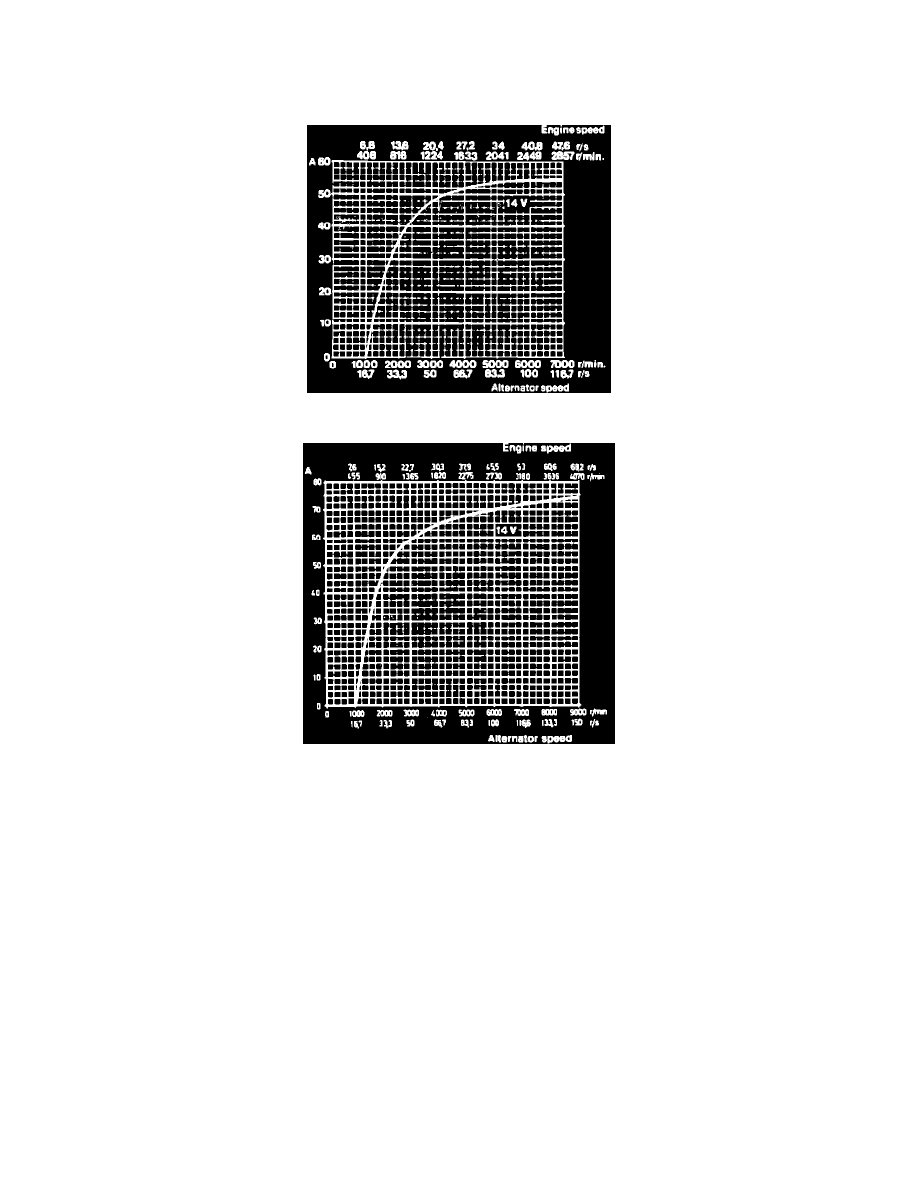850 T-5R L5-2.3L Turbo VIN 58 B5234T5 (1995)

Alternator: Testing and Inspection
When testing an alternator, it is important that a fully charged battery be used.
Alternator Output Test
Fig. 1 Alternator Output Test. Bosch 55 Amp Alternator w/Integral Regulator
Fig. 2 Alternator Output Test. Bosch 70 Amp Alternator w/Integral Regulator
1.
With alternator at normal operating temperature, run engine at 3000 RPM for 3 minutes.
2.
Using a suitable shunt or loading alternator with accessories to require 40 amps, check output and compare to Fig. 1 for 55 amp alternator or Fig.
2 for 70 amp alternator.
3.
If alternator does not produce current within specifications, check brushes. If brushes are satisfactory, repeat test using a known good regulator.
Indicator on dash must not glow during any part of the testing procedure, if so one or more diodes are defective. Also maximum voltage difference
between B+ and D+/61 is 1/2 volt.
Voltage Regulator Test
1.
Run alternator until normal operating temperature is reached.
2.
With the engine running at 3000 RPM, measure the voltage between B+ and D - terminals on back of alternator.
3.
Correct reading should be 13.4-14.2 volts. If voltage is incorrect, make sure alternator brush length is correct. Minimum brush length is .2 inch
(5mm). If brush length is satisfactory, replace regulator.
Temperature Sensor Test
